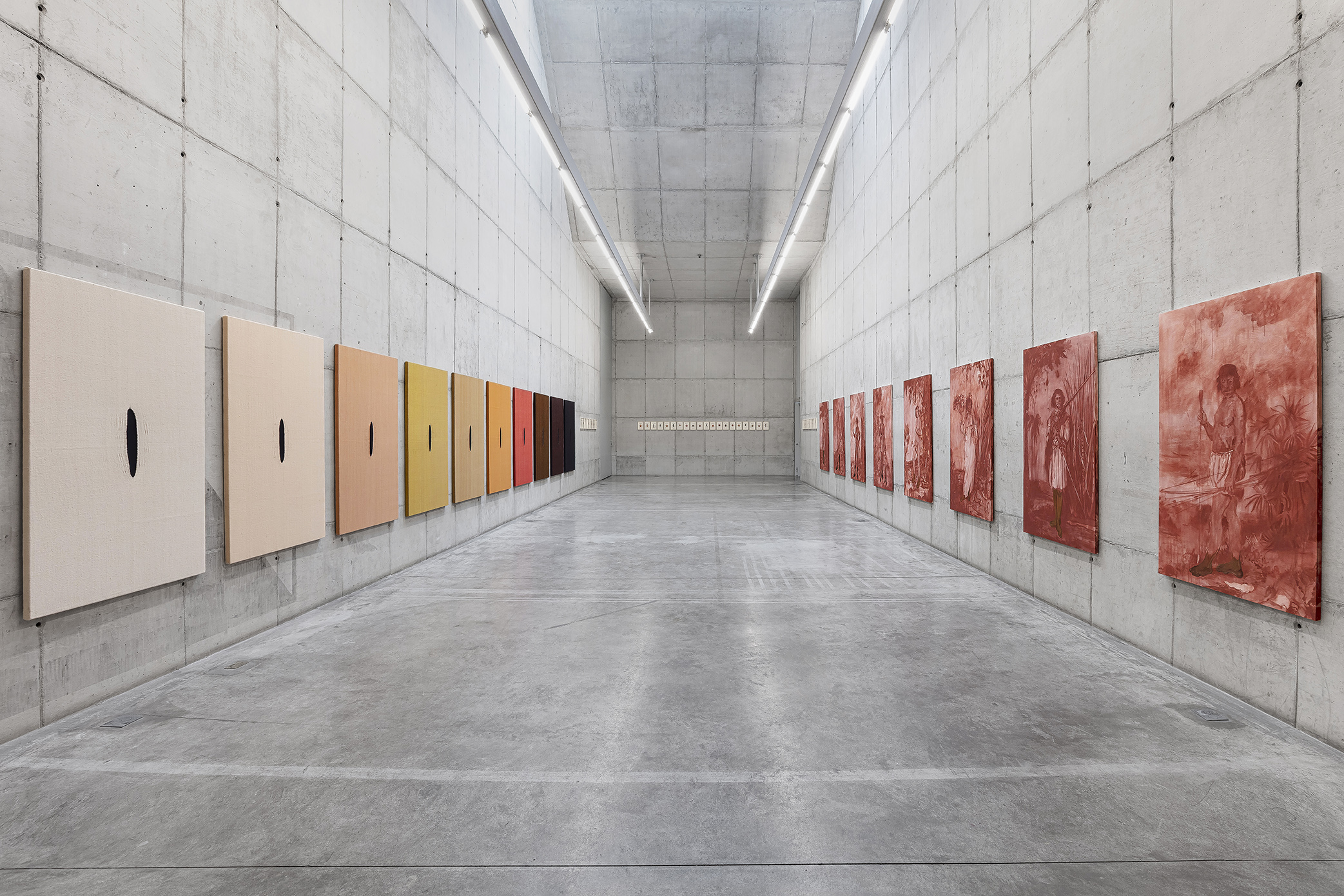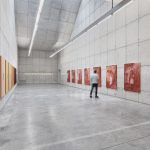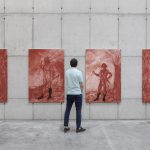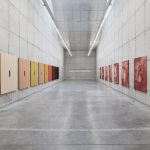Galeria Leme presents the exhibition En vías de desarrollo, solo show by Sandra Gamarra. The Peruvian artist is presenting never before seen pieces in Brazil. Opening on November 23, the exhibition remains on display until January 21, 2023.
In her body of works, as do the pieces ones in this exhibition, Gamarra presents a critical perspective of colonial relationships and imagery that still persists in contemporary times. The three series that make up this show explore the different conceptions of the world that coexist in the Americas.
“In the so-called developing countries, there it seems to coexist two ideas of the Earth: one that understands it as a subject with rights and the other that understands it as an object through which humans get rights”, comments the artist.
The series En vias de desarrollo, that titles the exhibition, consists of 10 reinterpretations of Albert Eckhout’s pieces. On them, the portraits and still life are painted with iron oxide giving earthy tones to the composition. Some details, such as the feet and hands of the human figures are done with oil paint suggesting they are unfinished works.
Albert Eckhout was an important Dutch painter, who remained in Brazil for seven years, during the Dutch occupation in the 16 century. In service of the Count Maurício de Nassau, Eckhout documented the “New World” through drawings and paintings. His works were considered for a long time official documents, as faithful representations of Brazilian reality.
It’s this documental attribute that Gamarra stresses in her reinterpretations. When the artist applies different treatments to the painting – sometimes details in oil paint, others red stains – the artist withdraws the veracity once granted to them and puts them in question. The artist’s gesture denounces development and progress as narratives, social constructions that hide conceptions of the world when presented as synonymous with the truth.
In Cuando las papas queman [When the potatoes burn], Gamarra paints potatoes over reproductions of drawings of the work Primera Nueva Crónica y Buen Gobierno [First New Chronicle and Good Government], written by indigenous and peruvian Felipe Guamán Poma de Ayala, in the beginning of 16 century. Both elements used by the artist comment on the relationship between Peru and Spain. In the work by Ayala, the writer contemplates ancient Andean history, the rise of the Incan Empire, the Spanish invasion and the beginning of the colonial period through an indigenous perspective. The publication was dedicated to king Filipe III in order to bring better living conditions to the population by narrating the violence committed by the crown. Potatoes had already become a symbol of cultural exchange between Spain and Peru after the colonization.
It’s possible to find more than 4.000 species of potatoes in Peru, that vary in colors, shape and nutrients, according to the region and period in which they are cultivated. This diversity is the result of the age-old wisdom of Andean people in the cultivation of the food. So, the portrait of a variety of potatoes by Gamarra, seems to be an allegory of Andean wisdom and not of the cultural exchange anymore, while Ayala’s drawings refute a friendly cultural exchange between Spain and Peru, as some want to naturalize nowadays.
Gradación [Gradation] is a series of ponchos stretched out on a chassis as if they were paintings. The chromatic variation creates a gradation from the beige to the black passing through brown and red tones that resemble human skin color and different kinds of soil.
“They show that ponchos came from the plantation, the cavity where we put the head is a reference to the hole made in the ground to plant the seed. The tear in the center of the canvas also reminds one of a modernist piece, such as those by Lucio Fontana. The same gesture alludes to two opposite ideas: one appeals to the earth’s cycles and to ancestral wisdom, and other to the new, our eternal aspiration for a beginning”, comments Gamarra.
About the artist
Lima, Peru, 1972. Lives and works in Madrid, Spain.
Sandra Gamarra is the creator of the fictional Lima Museum of Contemporary Art (2002), which is an imaginary collection of paintings with accompanying merchandise based on her hand-painted reproductions of works by her contemporaries. Gamarra’s method of appropriation raises questions about issues of authenticity and the status of replicas. Indeed, a significant part of Gamarra’s work focuses on the mechanisms of the art world, including the art market, exhibitions and creative processes, to explore its reality and workings. In her work, Gamarra has explored the socio-political consequences of what she considers an incomplete modernity in South America.
Solo exhibitions: Buen Gobierno, CGAC Santiago de Compostela, Coruña, Spain; Orden de los Factores, Museo Amparo, Mexico (2022); Producción/Reproducción. MALI, Lima, Peru; Buen Gobierno, Sala Alcalá, Madrid, Spain (2021); Rojo Indio, Galería Juana de Aizpuru, Madrid, Spain (2018); Paisagem entre aspas, Galeria Leme, São Paulo, Brazil (2017); Instituto Figueiredo Ferraz, Ribeirão Preto, Brazil (2016), At the Same Time, Bass Museum of Art, Miami, USA (2011), among others.
Group exhibitions: Histórias Brasileiras, MASP, São Paulo, Brazil (2022); 11th Berlin Biennale, Berlin, Germany (2020); Há sempre um copo de mar para um homem navegar, 29ª Bienal Internacional de São Paulo, Fundação Bienal, São Paulo, Brazil (2010); Mundus Novus, Pavilhão da IILA, 53ª Biennale di Venezia, Venice, Italy (2009), among others.
Her work integrates collections such as: MoMA, New York, USA; Tate Modern, London, England; MACBA (Museum of contemporary art of Barcelona), Barcelona, Spain; MASP (Museu de Arte de São Paulo), São Paulo, Brazil; Basque Museum Art Center, Vitoria, Spain; Deutsche Bank Art Collection; MALI (Museo de Arte de Lima) Peru; MUSAC, León, Spain; MALI, Lima, Spain; MAR, Rio de Janeiro, Brazil, among others.





